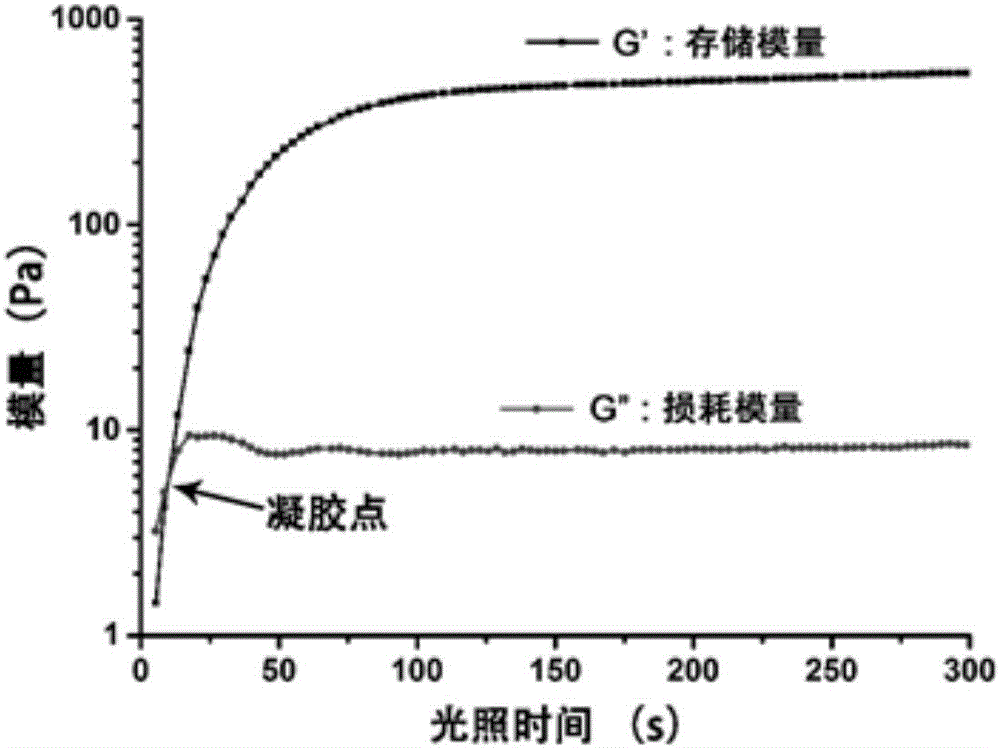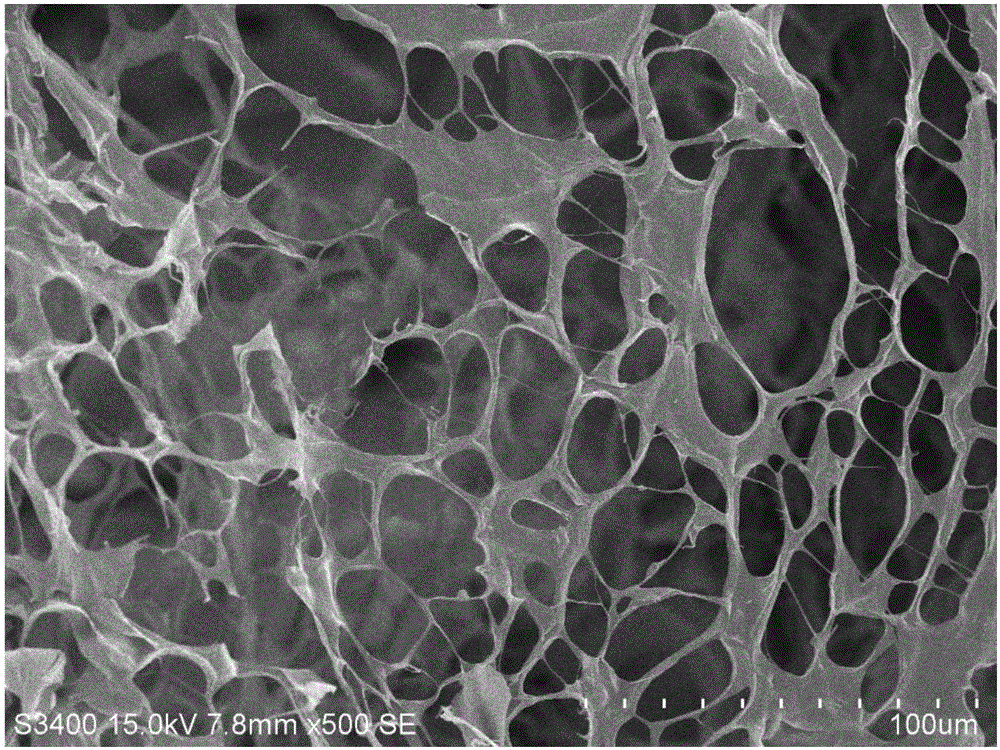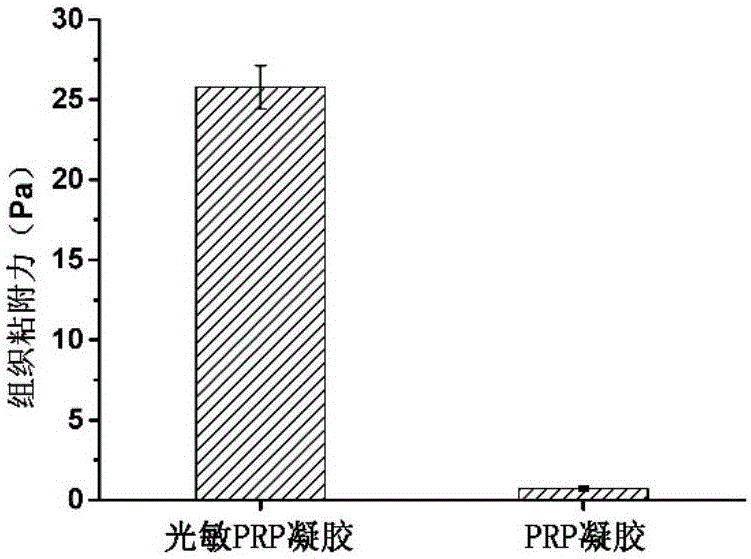Photosensitive PRP (platelet-rich plasma) gel and preparation method and application thereof
A platelet-rich plasma and gel technology used in the field of regenerative medicine to achieve seamless integration
- Summary
- Abstract
- Description
- Claims
- Application Information
AI Technical Summary
Problems solved by technology
Method used
Image
Examples
Embodiment 1
[0060] Preparation of photosensitive PRP gel formed from carboxymethylcellulose modified with photosensitive group o-nitrobenzyl alcohol (CMC-NB) and rabbit blood PRP, and its rheological and morphology analysis and tissue adhesion test
[0061] (1) Synthesis of photosensitive group o-nitrobenzyl alcohol (NB).
[0062]
[0063] Synthesis of Compound 1: References [Pauloehrl, T.; Delaittre, G.; Bruns, M.; Meiβler, M.; H.G.; Bastmeyer, M.; Barner-Kowollik, C.Angew.Chem.Int.Ed.2012,51,9181.]
[0064] Synthesis of compound 2: Dissolve compound 1 (1g, 3.3mmol) and ethylenediamine (1.1mL) in methanol (50mL), reflux for overnight reaction, rotary evaporation under reduced pressure, dissolve the crude product in methanol, and dissolve in acetic acid Reprecipitate from ethyl ester. After several times of dissolution-reprecipitation, filtration and vacuum drying, the pure compound 2 (0.93 g, yield 85%) was obtained.
[0065] (2) Synthesis of CMC-NB: 500mg of carboxymethylcellulos...
Embodiment 2
[0072] Photosensitive PRP hydrogel for slow release of cytokines
[0073] Dissolve CMC-NB in physiological saline, configure a solution with a mass concentration of 4%, and sterilize at high temperature. Take a certain volume of freshly extracted rabbit blood PRP and mix it with the above CMC-NB solution to form a gel precursor solution. Subsequently, 200 μL of the gel precursor solution was added to the wells of the 48-well plate, and each well was irradiated with light (365nm LED light source, light intensity: 20mW / cm2) for 5 minutes to form a photosensitive PRP gel as the experimental group. In addition, in the control group, 160 μL of freshly extracted rabbit blood PRP was added dropwise to a 48-well plate, and then 40 μL of 10% wt calcium chloride solution containing 1000 U / mL thrombin was added, and mixed evenly until a PRP gel was formed. Next, 200 μL of PBS was added to the wells of the experimental group and the control group, and the last added PBS was collected e...
Embodiment 3
[0075] Effect of photosensitive PRP hydrogel on repairing skin damage in diabetic rats
[0076] Preparation of the skin defect model of type Ⅱ diabetic rats: take 20 normal SD rats, and use standard methods to induce diabetes in SD rats (references Mohsen Khosravi Maharlooei, Mansooreh Bagheri, ZhabizSolhjou, Behnam Moein Jahromi, Majid Akrami, Lili Rohani , Ahmad Monabati, Ali Noorafshan, Gholamhossein Ranjbar Omrani, Diabetes Research And Clinical Practice 2011, 93, 228-234). Subsequently, a complete skin defect model with a diameter of 2 cm was made on the back of each SD rat. And according to the different treatment methods of the wound site, the 20 SD rats were randomly divided into five groups on average: the wounds of the SD rats in the experimental group were treated with 200 μL of photosensitive PRP gel formed in situ; the SD rats in the positive control group The wounds were treated with 200 μL of freshly extracted rabbit blood PRP gel; the wounds of SD rats in the ...
PUM
| Property | Measurement | Unit |
|---|---|---|
| Wavelength | aaaaa | aaaaa |
Abstract
Description
Claims
Application Information
 Login to View More
Login to View More - R&D
- Intellectual Property
- Life Sciences
- Materials
- Tech Scout
- Unparalleled Data Quality
- Higher Quality Content
- 60% Fewer Hallucinations
Browse by: Latest US Patents, China's latest patents, Technical Efficacy Thesaurus, Application Domain, Technology Topic, Popular Technical Reports.
© 2025 PatSnap. All rights reserved.Legal|Privacy policy|Modern Slavery Act Transparency Statement|Sitemap|About US| Contact US: help@patsnap.com



